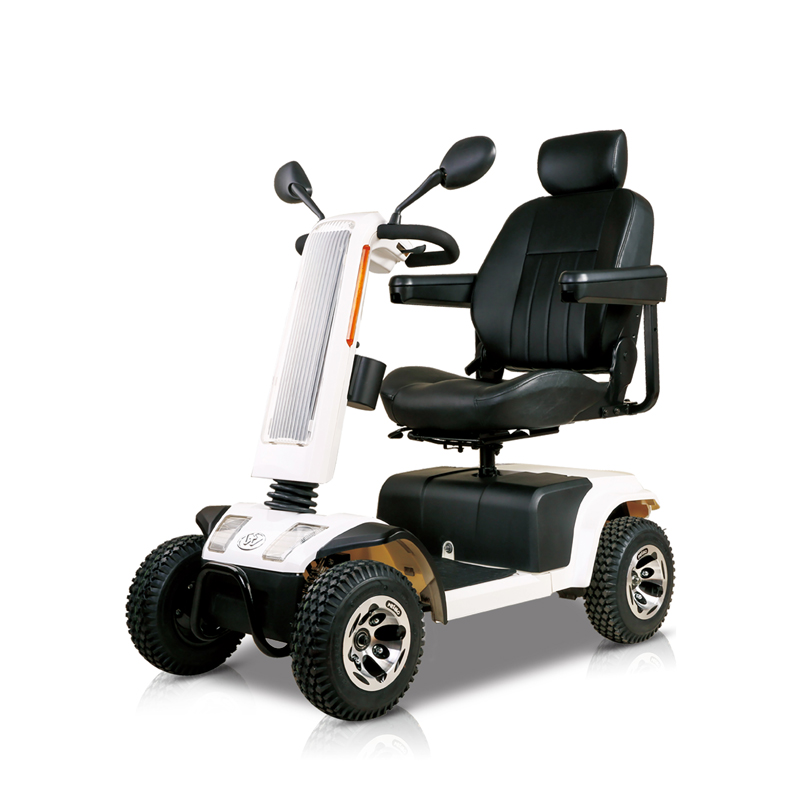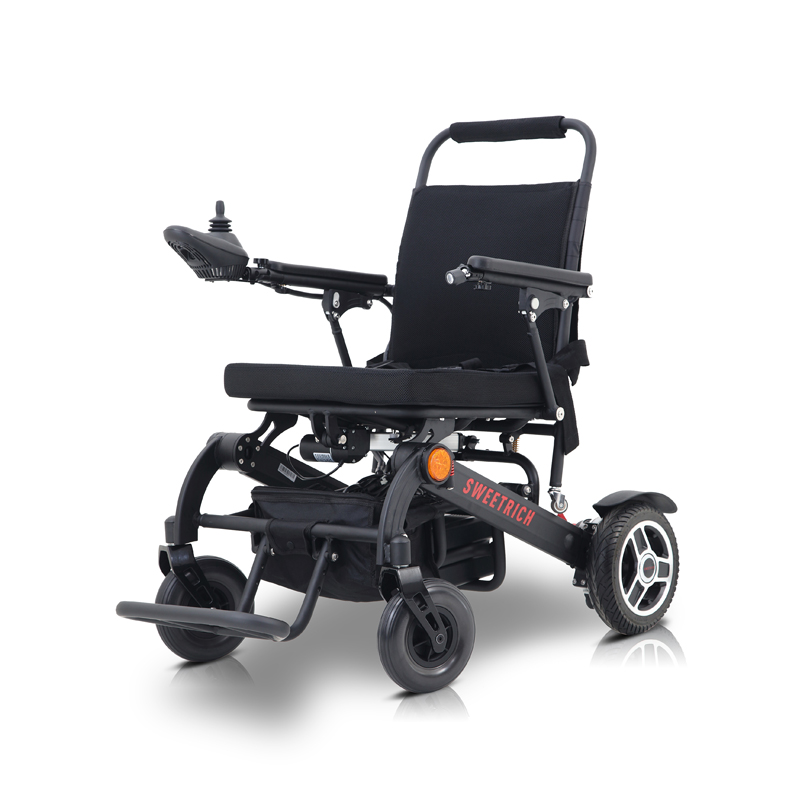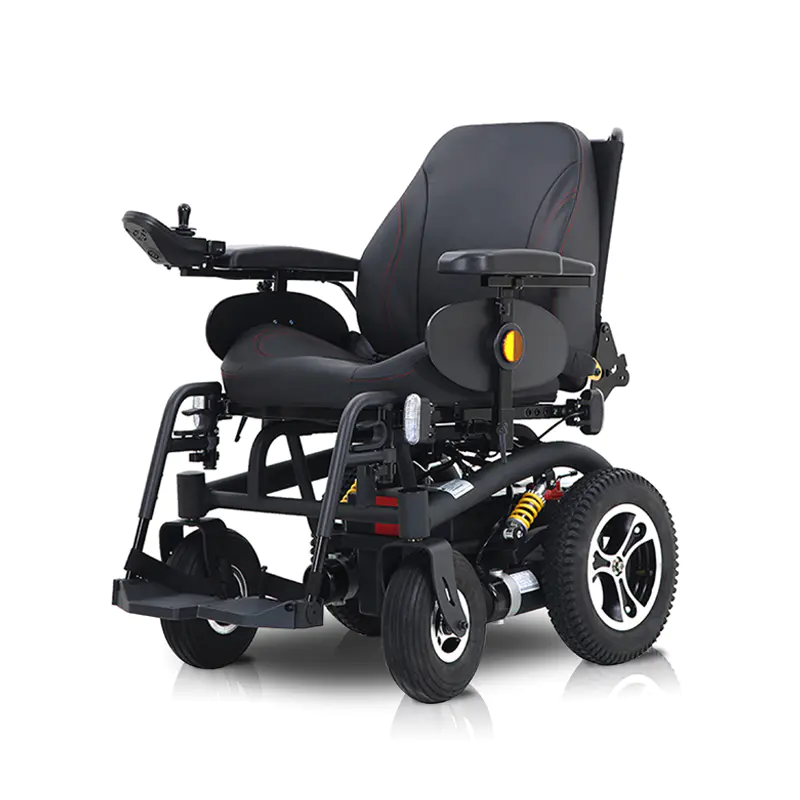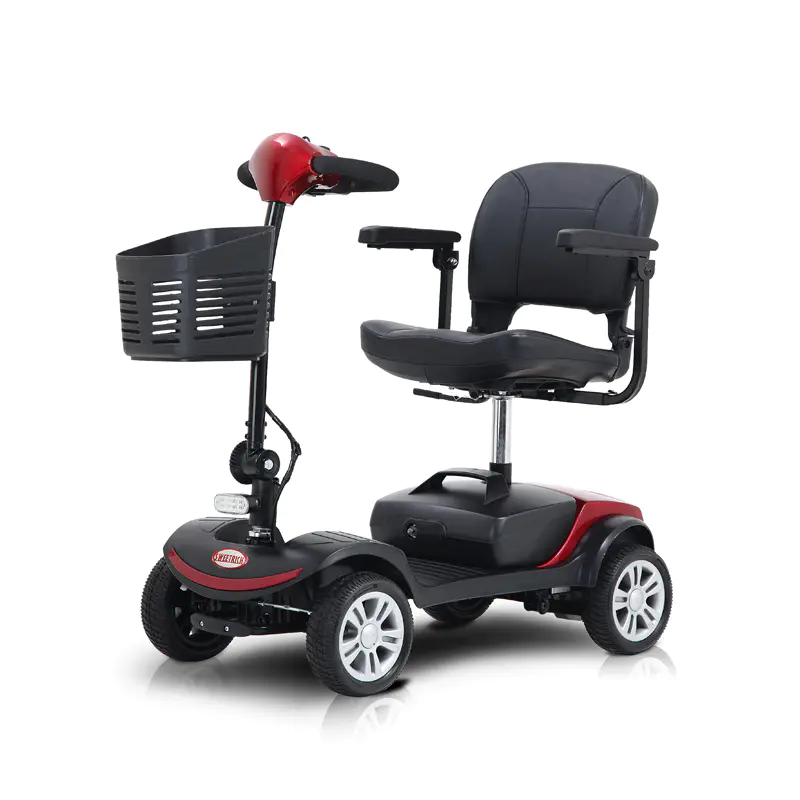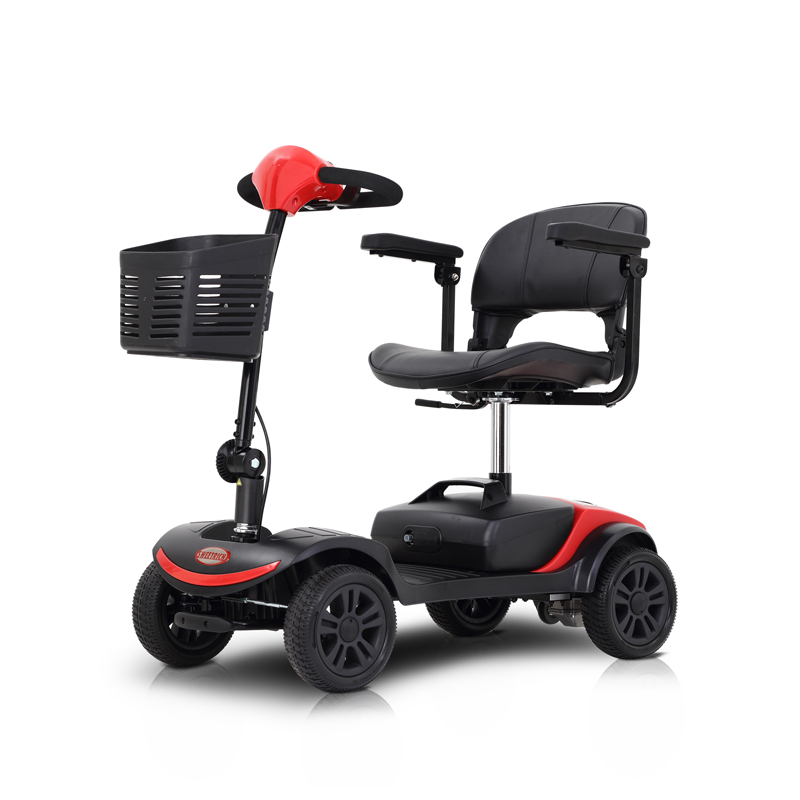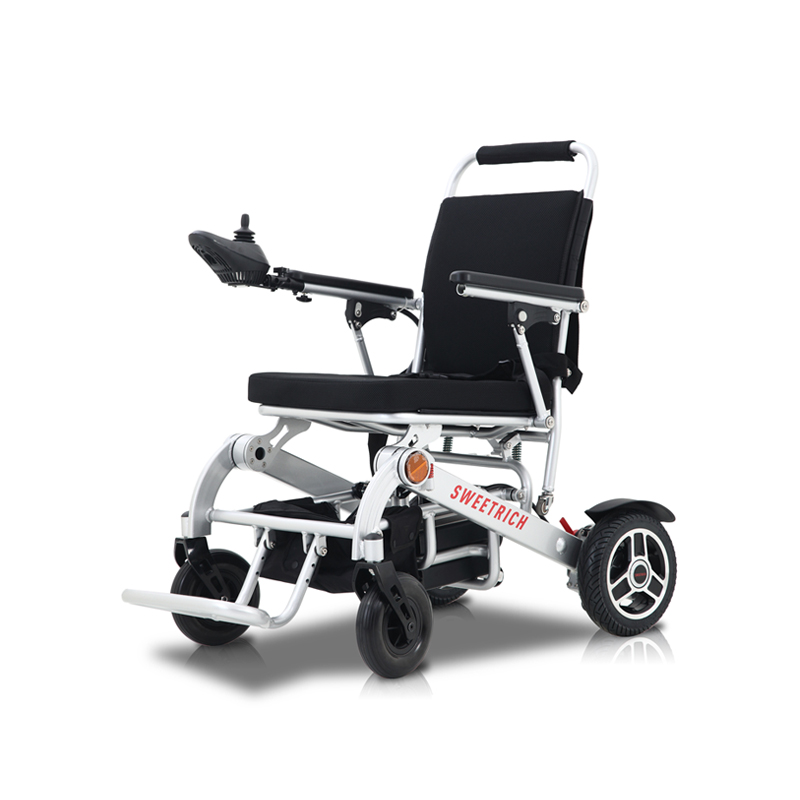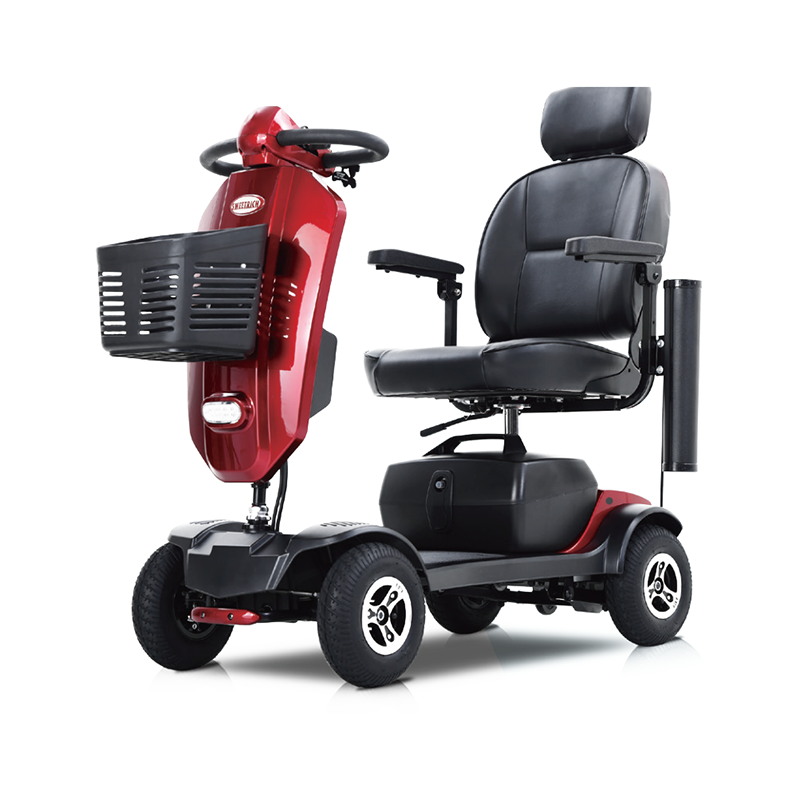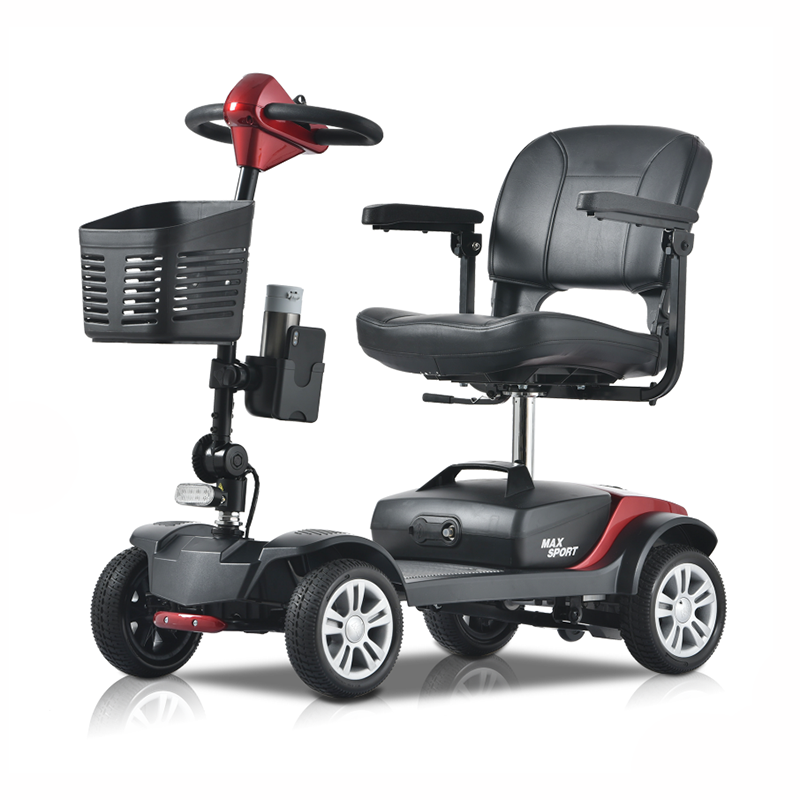The operation of heavy duty power wheelchairs depends on the motor drive system, and the gears are the core components in the transmission process. The tooth profile accuracy of the gears directly determines the efficiency and stability of power transmission. When the gear tooth profile accuracy is insufficient, the meshing gears cannot achieve perfect fit. During operation, the contact area of the gear tooth surface will be uneven, and some areas will be subjected to excessive pressure, resulting in stress concentration. This stress concentration will not only accelerate the wear of the gears, but also cause energy loss during power transmission. Imagine that when the electric wheelchair is driving, the inaccurate gear tooth profile makes the power transmission intermittent, and the user can clearly feel the frustration during operation, which not only affects the ride comfort, but also causes additional load on other components such as the motor.
At the same time, poor tooth profile accuracy will cause abnormal vibration and noise when the gears rotate. When the meshing between the gears is not smooth, each tooth-to-tooth bite will produce an impact, which will cause vibration of the gears and the entire transmission system. As the vibration intensifies, the noise will also increase. Being in such a high-noise operating environment for a long time will not only bring an unpleasant user experience, but may also cause interference to the surrounding environment. Moreover, continuous vibration will also affect other parts of the electric wheelchair, causing the originally tightly connected parts to gradually loosen, further reducing the stability and reliability of the equipment.
The concentricity of the motor shaft also has an important impact on the operation of the heavy duty power wheelchair. The motor shaft is a key part of the motor power output, and it is closely connected with transmission parts such as gears. If the concentricity of the motor shaft does not meet the standard, it means that the motor shaft will be eccentric when rotating. This eccentricity will cause the motor to generate unbalanced centrifugal force during operation, just like a rotating gyroscope with a shifted center of gravity, which will cause the gyroscope to shake or even fall. When the motor runs in an eccentric state, it will not only increase its own mechanical wear, but also make the output power of the motor unstable. When the electric wheelchair climbs a slope or encounters resistance, a motor with poor concentricity may not be able to provide stable and sufficient power, causing the wheelchair to travel faster and slower, or even stagnate due to insufficient power.
In terms of affecting the service life of the electric wheelchair, the role of gear tooth profile accuracy and motor shaft concentricity is more prominent. Since heavy-duty electric wheelchairs mainly serve users with limited mobility and heavy weight, the equipment itself bears a large load in daily use. If the gear tooth profile accuracy is insufficient, the gear wear rate will be significantly accelerated under long-term high-load operation. As the wear intensifies, the gear tooth profile will gradually change, and the originally inaccurate tooth profile will become worse, forming a vicious circle. In the end, the gear may have serious problems such as broken teeth and excessive wear, resulting in failure of the entire transmission system and the inability of the electric wheelchair to operate normally. Insufficient concentricity of the motor shaft will cause the bearings, rotors and other components inside the motor to be in an abnormal stress state for a long time. When the bearing is eccentric, it will bear uneven pressure, accelerating its wear and fatigue. Once the bearing is damaged, the operation of the motor will be seriously affected, and may even cause serious faults such as motor burnout, greatly shortening the service life of the electric wheelchair.
In order to ensure the good operation and long service life of the heavy-duty electric wheelchair, it is particularly important to strictly control the gear tooth profile accuracy and motor shaft concentricity during the production process. Manufacturing companies use advanced processing equipment and precision testing instruments to ensure the accuracy of these two key parameters. In terms of gear processing, high-precision CNC machine tools can control the error of gear tooth profile within a very small range through complex cutting processes. At the same time, professional gear testing equipment is used to conduct comprehensive testing on the processed gears to ensure that their tooth profile accuracy meets the design requirements. For the control of the concentricity of the motor shaft, high-precision positioning devices and professional calibration tools are used during the motor assembly process to ensure that the concentricity of the motor shaft and other components meets the standard. Before leaving the factory, each electric wheelchair will also undergo rigorous testing and debugging. By simulating various usage scenarios, the operation of the gears and motor shafts will be tested and optimized to ensure the quality and performance of the product.
The two seemingly insignificant parameters of gear tooth profile accuracy and motor shaft concentricity have a profound impact on heavy-duty electric wheelchairs, from the smoothness of operation, the stability of power output, to the overall service life of the equipment. Only by strictly controlling these parameters during the manufacturing process can heavy-duty electric wheelchairs provide users with more reliable and comfortable services and accompany users through the long years.
-
 +86-(0)512-82283871
+86-(0)512-82283871 - Contact us
- Buy online
- Download Catalog
Excellent manufacturer of mobility products
- Home
- Mobility Scooters
- Electric Wheelchairs
- Travel Smart
- Resources
- About Us

